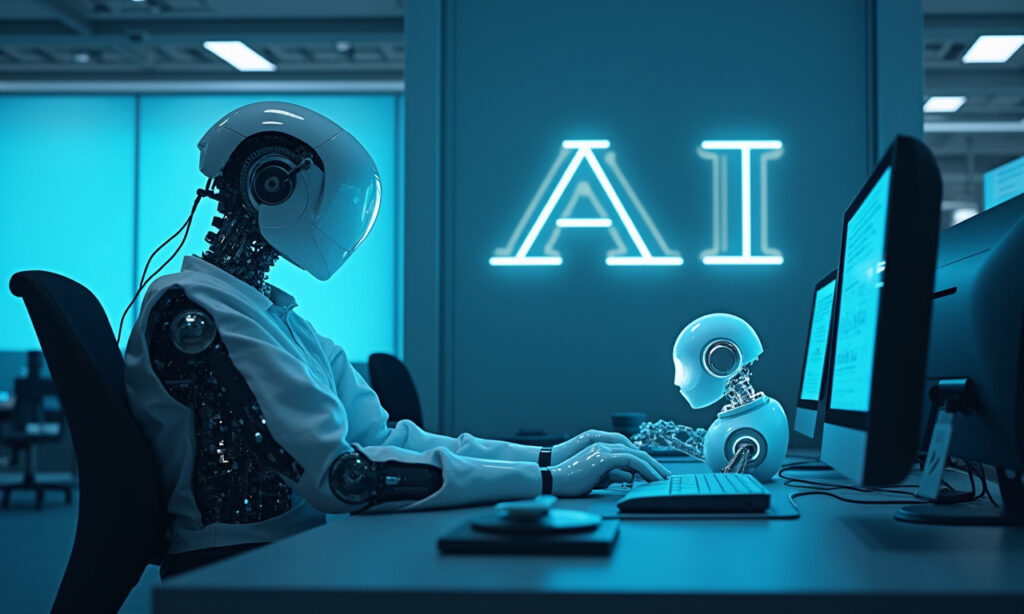As AI continues to integrate into various sectors, the notion of AI employees has garnered significant attention. While AI offers the promise of 24/7 operation and reduced labor costs, it also introduces a plethora of unique challenges that employers must navigate.
Holidays vs. System Updates
One of the most touted benefits of AI employees is their ability to work around the clock without the need for rest or breaks. However, this benefit is not without its caveats. AI systems, just like their human counterparts, require maintenance and updates to function optimally. System downtime, whether planned or unexpected, can disrupt operations in much the same way a human taking time off might.
The financial impact of such downtime is substantial. Unplanned outages can result in billions of dollars in lost revenue, regulatory fines, and other hidden costs such as slower time to market and damaged brand reputations. Ensuring AI systems are regularly updated and maintained is crucial to avoid deteriorating performance and accuracy.
The Challenge of Infrastructure
The promise of 24/7 availability is contingent on robust infrastructure. Any issues in the infrastructure can lead to system failures, which are akin to a human employee’s absence. This underscores the importance of investing in reliable and scalable infrastructure to support AI operations.
Sickness vs Hallucinations
While AI employees do not call in sick, they can suffer from bugs and hallucinations that are equally disruptive. AI hallucinations occur when models generate incorrect or nonsensical outputs, a problem that is more common than one might expect. For instance, AI models like Microsoft’s Tay chatbot have been shut down due to such issues.
Different AI models vary in their robustness against bugs, and even top-tier models can be unreliable at times. Detecting and addressing these issues before they cause harm is essential, much like managing employee performance to identify challenges or skills shortages.
Mitigating Hallucinations
To mitigate these issues, ongoing governance and continuous monitoring are necessary. This includes regular updates, audits, and retraining to ensure AI models remain accurate and reliable. Companies like OpenAI, Anthropic, and Google are continuously working to reduce model hallucinations, but the task is ongoing and requires consistent effort.
Monthly Pay vs. Updates
The cost of deploying AI solutions is often misunderstood as a one-time expense. However, AI models evolve rapidly, and businesses may need to invest in costly updates or entirely new systems to remain competitive. This ongoing investment is similar to providing pay raises or professional development for human employees.
For example, the recent launch of business-tier AI solutions and the integration of AI co-pilots into workflows come with evolving licensing fees, cloud computing costs, and retraining requirements. This means that the AI implemented today could be outdated in just a few years, requiring additional investment to maintain efficiency.
The Cost of Staying Current
The financial commitment to AI is not a single payment but a continuous investment. As AI models advance, so do the costs associated with keeping them up-to-date. This includes not only the direct costs of updates and licensing but also the indirect costs of retraining and ensuring compliance with evolving regulations.
Training vs. Data Input
Just as human employees need training to improve and develop, Large Language Models (LLMs) require vast amounts of high-quality data to learn and enhance their performance. The more complex the model, the more data it needs. For instance, some models may require at least 10 million labeled items.
The Importance of Data Quality
The quality and relevance of the data are crucial, as AI can only be as good as the data it is trained on. Poor data input results in poor data output. To improve AI accuracy, many companies are adopting retrieval-augmented generation (RAG) techniques, allowing models to source data from verified external sources rather than relying solely on pre-trained data.
So, What’s the Verdict?
The truth is, it’s not about choosing between AI and human employees; it’s about harnessing the strengths of both. Issues such as governance, training, hallucinations, and updates can be just as time-consuming and expensive for businesses as managing human talent.
The Power of Human-AI Collaboration
The real value of AI lies in enabling humans to focus on what they do best: deeper thinking, creativity, and building authentic human connections. When the efficiency and intelligence of AI combine with the creativity, empathy, and strategic thinking of humans, the possibilities are limitless. Together, they can drive innovation, boost productivity, and propel businesses towards long-term sustainable success.
By recognizing the complexities and challenges associated with AI employees, businesses can better integrate these technologies into their workflows, ensuring a harmonious and productive collaboration between humans and machines.
